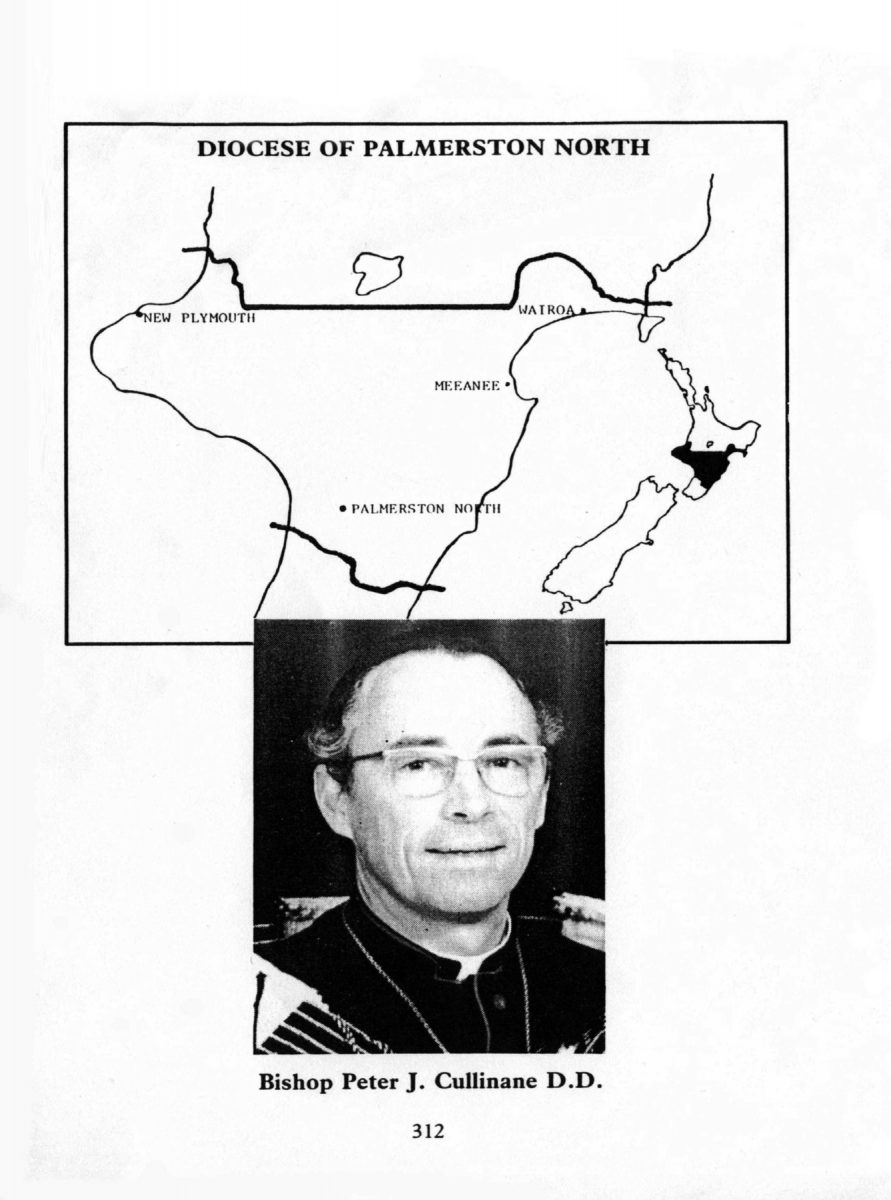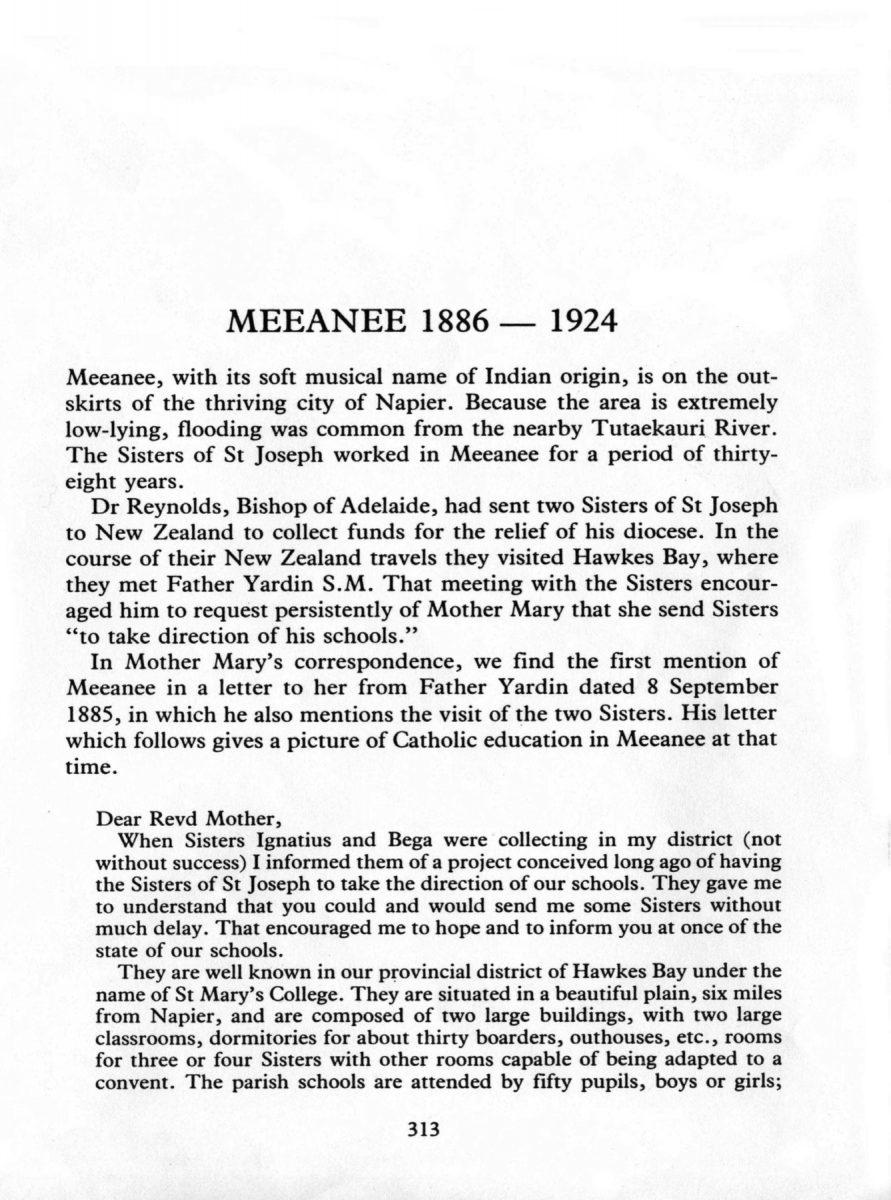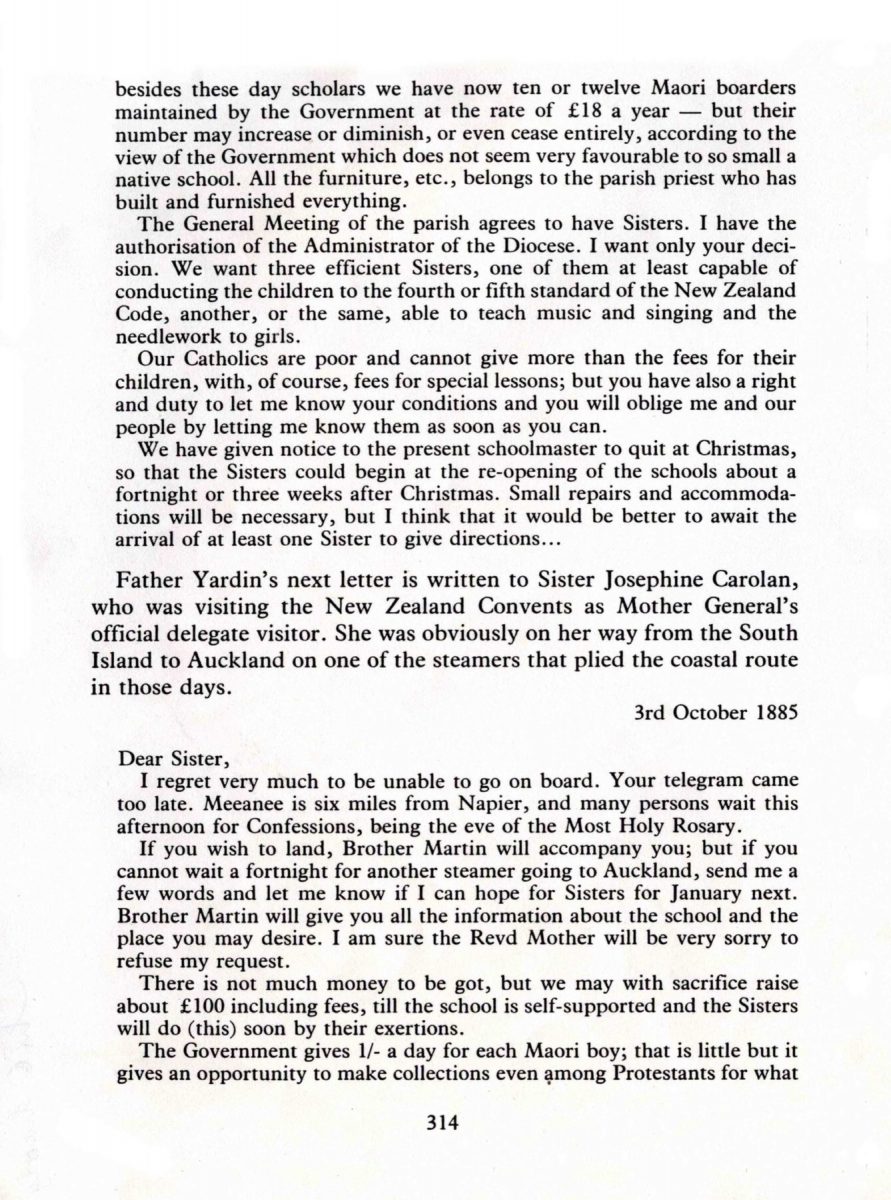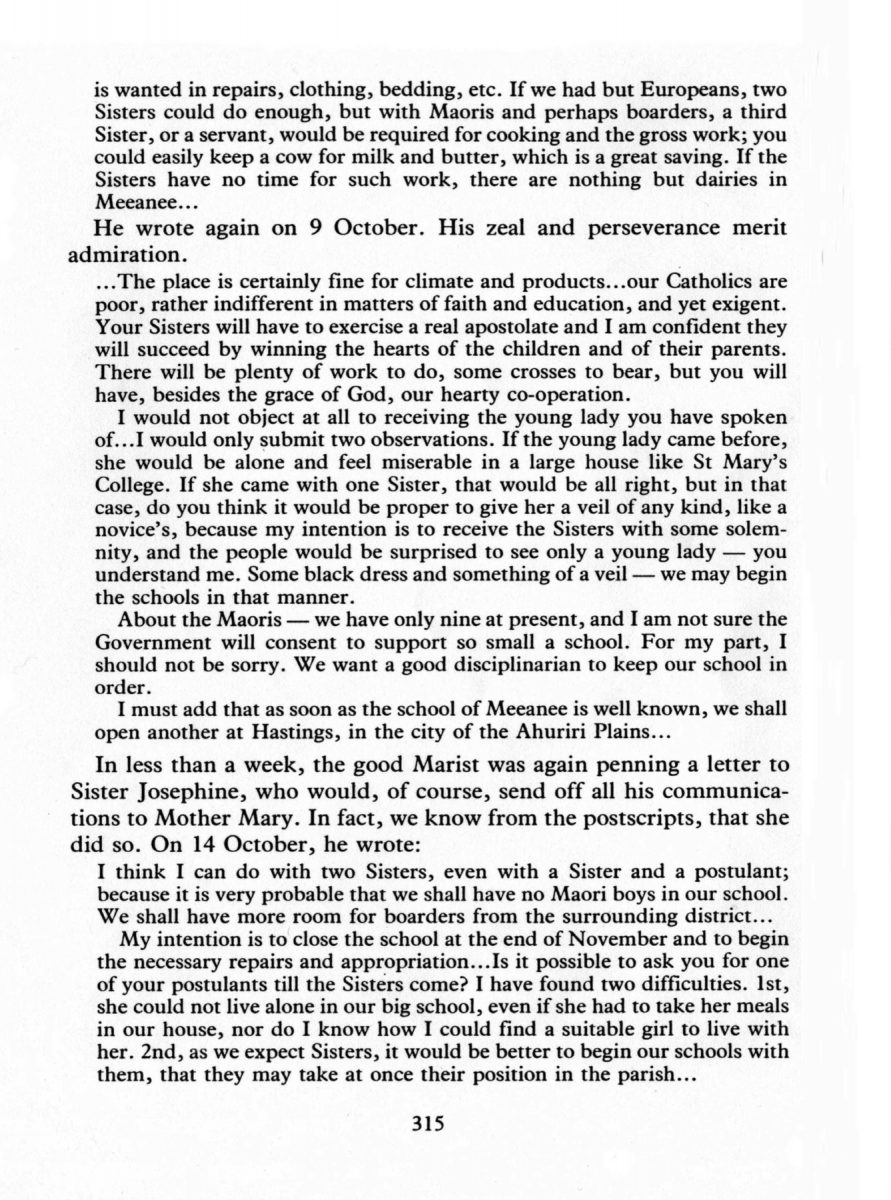Page 315
is wanted in repairs, clothing, bedding, etc. If we had but Europeans, two Sisters could do enough, but with Maoris and perhaps boarders, a third Sister, or a servant, would be required for cooking and the gross work; you could easily keep a cow for milk and butter, which is a great saving. If the Sisters have no time for such work, there are nothing but dairies in Meeanee.
He wrote again on 9 October. His zeal and perseverance merit admiration.
The place is certainly fine for climate and products our Catholics are poor, rather indifferent in matters of faith and education, and yet exigent. Your Sisters will have to exercise a real apostolate and I am confident they will succeed by winning the hearts of the children and of their parents. There will be plenty of work to do, some crosses to bear, but you will have, besides the grace of God, our hearty co-operation.
I would not object at all to receiving the young lady you have spoken of I would only submit two observations. If the young lady came before, she would be alone and feel miserable in a large house like St Mary’s College. If she came with one Sister, that would be all right, but in that case, do you think it would be proper to give her a veil of any kind, like a novice’s, because my intention is to receive the Sisters with some solemnity, and the people would be surprised to see only a young lady – you understand me. Some black dress and something of a veil – we may begin the schools in that manner.
About the Maoris – we have only nine at present, and I am not sure the Government will consent to support so small a school. For my part, I should not be sorry. We want a good disciplinarian to keep our school in order.
I must add that as soon as the school of Meeanee is well known, we shall open another at Hastings, in the city of the Ahuriri Plains.
In less than a week, the good Marist was again penning a letter to Sister Josephine, who would, of course, send off all his communications to Mother Mary. In fact, we know from the postscripts, that she did so. On 14 October, he wrote:
I think I can do with two Sisters, even with a Sister and a postulant; because it is very probable that we shall have no Maori boys in our school. We shall have more room for boarders from the surrounding district.
My intention is to close the school at the end of November and to begin the necessary repairs and appropriation. Is it possible to ask you for one of your postulants till the Sisters come? I have found two difficulties. 1st, she could not live alone in our big school, even if she had to take her meals in our house, nor do I know how I could find a suitable girl to live with her. 2nd, as we expect Sisters, it would be better to begin our schools with them, that they may take at once their position in the parish…

























Do you know something about this record?
Please note we cannot verify the accuracy of any information posted by the community.